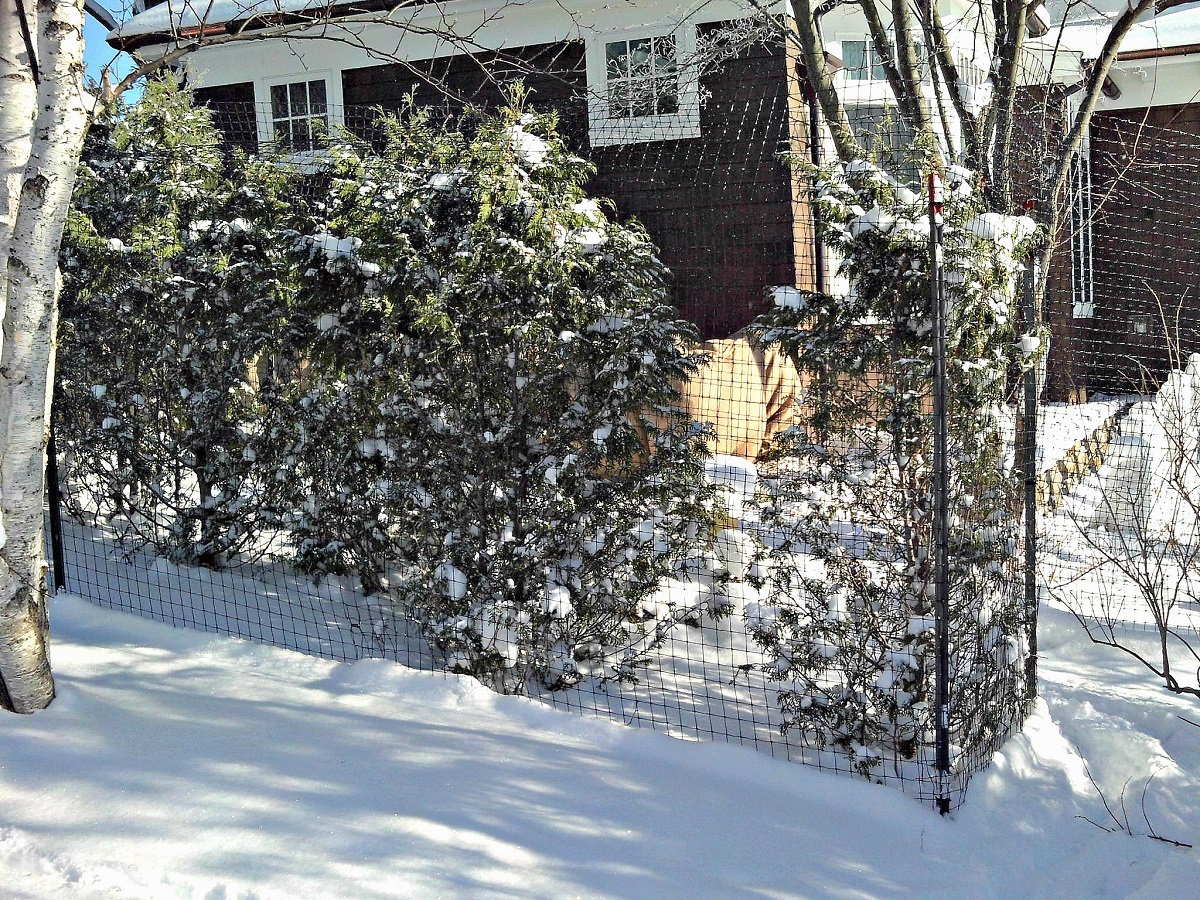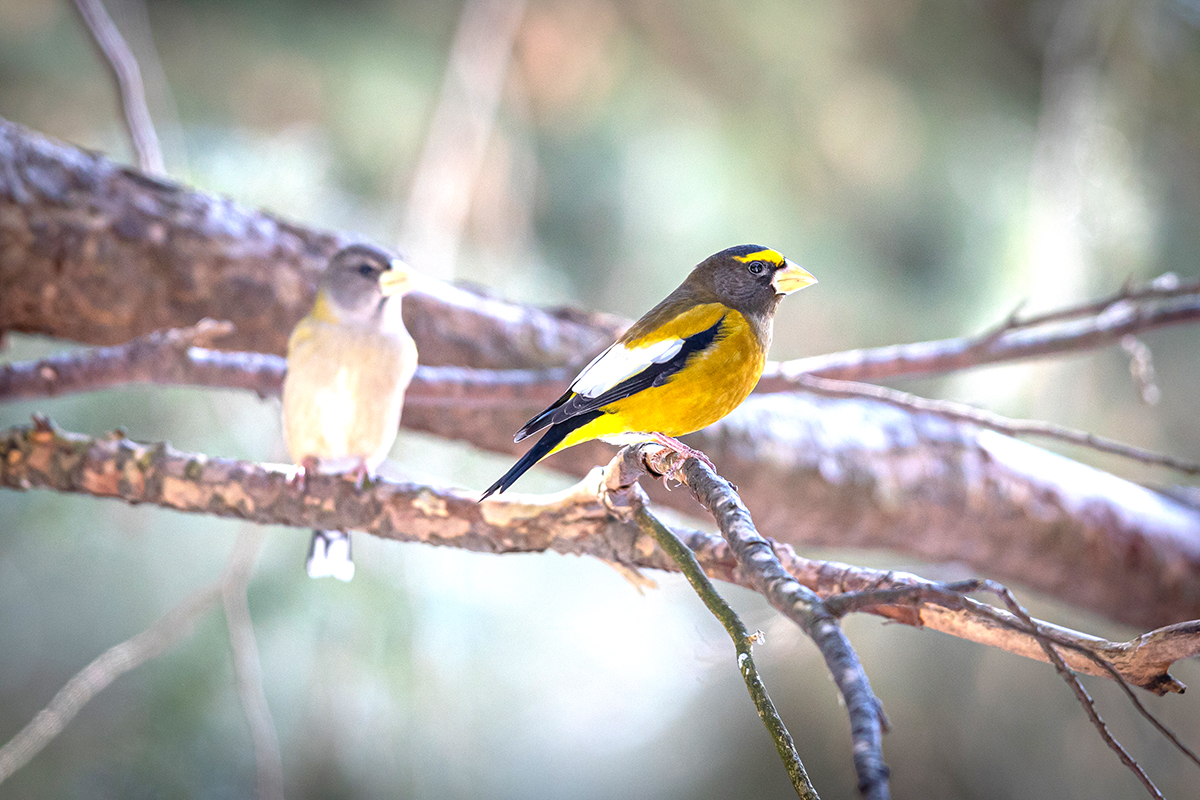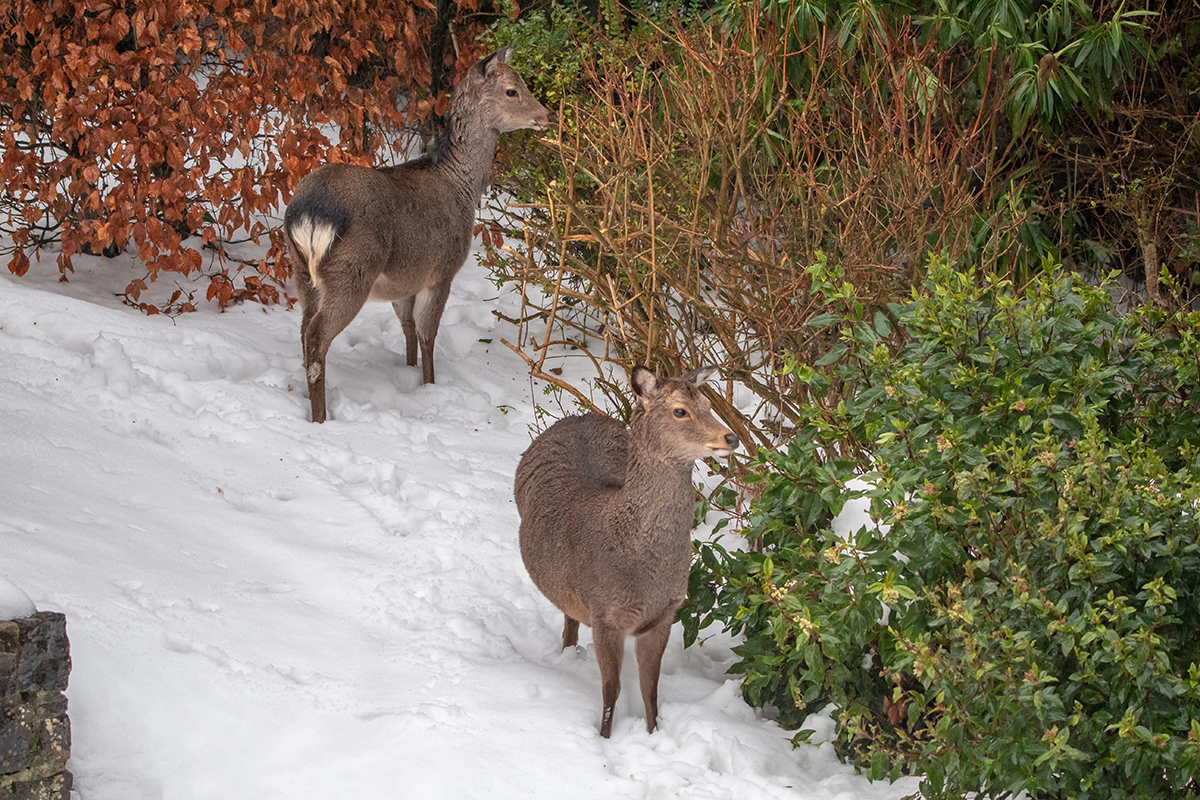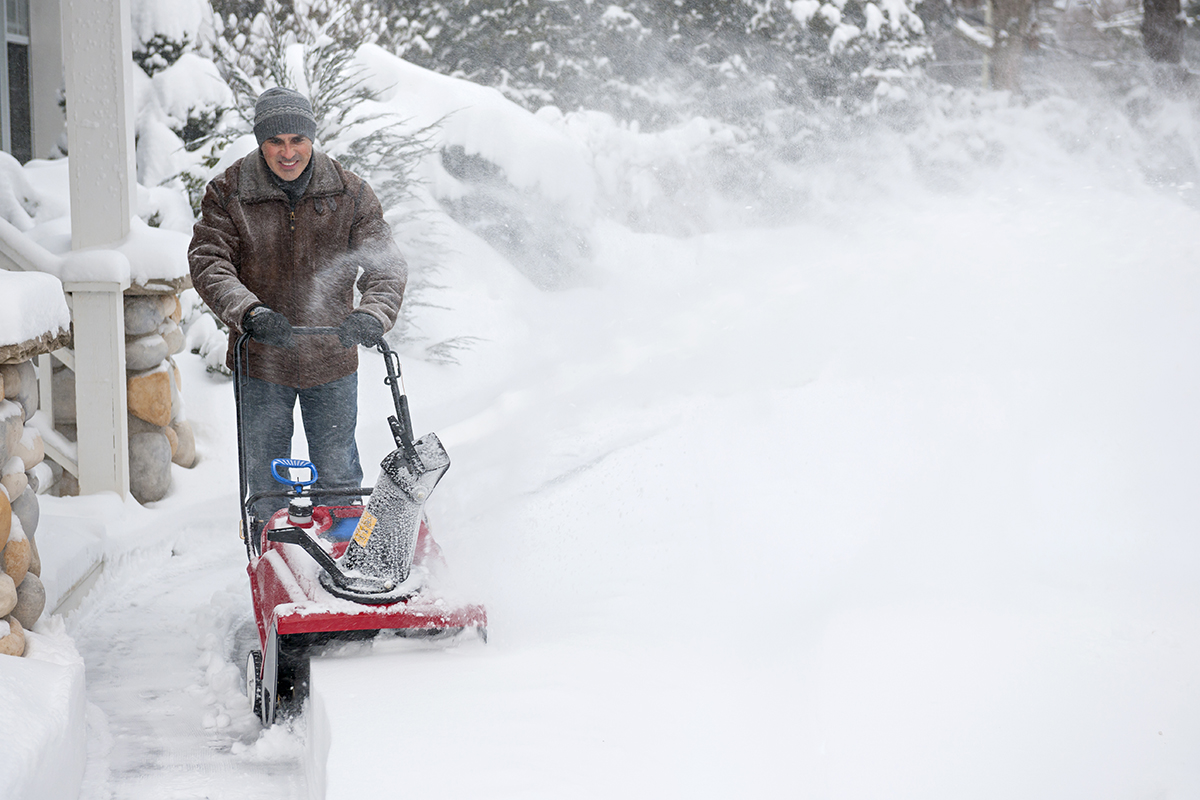WRITER | SCOTT PHILP
PHOTOS | LANDSCAPE LOGIC
Protecting your Landscape for Springtime Success
As consumers enjoy the spectacular flowers and textures of a lush, mature landscape during the summer months in Michigan, the last thing on their minds is the blustery winter winds sure to arrive a few months later. It’s during the coldest spells of winter, however, that the success or failure of next year’s lawn and garden is determined.
The first step in winter wind protection is to plant the correct species. Michigan ranges from zone 4a to zone 6b on the USDA hardiness map (available online), so selecting plants resilient to our growing climate is essential. Plants outside of Michigan hardiness zones can certainly be added to the landscape for the summer months, but they will need to be brought inside for the winter if they are to be replanted the following season.
Many hardy landscape plants can still benefit from winter protection. While deciduous plants go dormant for the season, evergreen trees and shrubs are prone to winter burn, as they still take up water during the colder months. When the soil freezes and cold winds extract moisture from their needles, plants may not be able to replenish that moisture, causing winter burn.
Newly planted landscapes are also more susceptible to winter burn than a mature landscape. These plants are still sending out new roots and may not yet have a mature root system capable of retaining enough moisture to thrive. Adjusting to a new growing environment and possibly to a climate different from where they were grown can make plants more vulnerable to winter weather. Taking the time to research winter care for these plants or consulting a landscape professional is time well spent to ensure springtime success.
Heavy burlap is a great choice to protect tender plants. It is inexpensive, very strong, and its light brown color blends into the landscape. Moreover, as an open-weave natural fiber, it doesn’t retain heat, which prevents plants from sprouting too early.
Certain varieties of hydrangea will not flower the following season if their flower buds freeze and die during the winter months. It is best to wrap these and fill the burlap with leaves to help insulate the buds. If you have seen a hydrangea that doesn’t flower during the normal bloom time, there’s a good chance its flower buds froze the previous winter.
Landscape professionals can also apply an antidesiccant spray to slow down the transpiration process of trees and shrubs during the winter months. This natural solution helps close the pores of the tree’s needles or leaves and prevents winter burn by allowing the tree to stay hydrated using less water extracted from frozen soils.
Wind fences are a great way to protect your landscape from harsh winter winds. Large landscape beds that include trees or shrubs can benefit from a 6- to 8-foot tall wind fence erected to slow winds down. These fences will protect multiple plants in a bed and are the most efficient way to approach winter care.
Steel T-posts are the most common way to install winter fencing. They are readily available, inexpensive, reusable, and very strong, but they can damage underground utility and sprinkler lines when installed, if these are not properly marked. As an alternative, professional landscape contractors can install a comprehensive fence system using sleeves permanently installed in the ground. Round posts slide into these sleeves and are then attached to the fencing material. While the upfront cost is more, annual installation is incredibly fast, and your underground utilities are safe every fall when the fence is erected.
Deer control is another essential wintertime consideration. Food becomes scarcer as native trees lose their leaves and the snow accumulates, burying shrubs. Deer will then consume landscape plants that they typically ignore. While plastic deer fence is a popular choice, it can become brittle from UV exposure over the years. Metal fencing will last for many more years and can also control rabbits and rodents.
The most typical winter landscape damage is from rabbit and rodent girdling. Girdling occurs when the healthy bark is eaten off the plant, interrupting nutrient flow from the roots to the branches. This process will often kill portions of, or even the entire tree or shrub.
Winds can erode sandy beaches as well. Tall wood-slat fences can be erected to help keep beach sand in place. Without them, not only might the rest of your landscape be full of sand driven in by winter winds, but your beach may accumulate additional stones and debris. Erecting wind fences on a beach can save hundreds or thousands of dollars come springtime.
Proper winter protection starts with the purchase and installation of a plant, shrub, or tree. If the plant is hardy for your zone, it may require less winter protection. If it is a new landscape or sensitive plant material, know that you may need to commit to a winter-care program to help the plants thrive. Landscape professionals can help you protect your investment and ensure vibrant springtime health.








